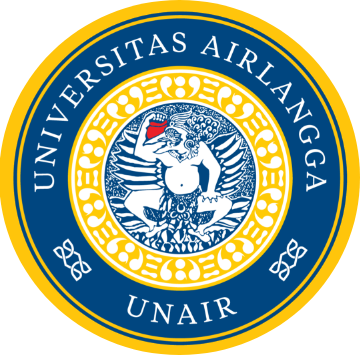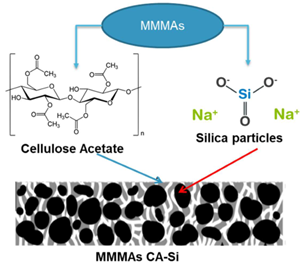Kidney disease is an issue in world health with high medical costs and chronic kidney disease has become a global problem because the number of cases continues to increase yearly, nationally and globally. The data in 2018 of Basic Health Research (Riskedas) show an increase in cases of chronic kidney disease in Indonesia at the age of ≥15 years. In 2013, the number of chronic kidney diseases was 0.2 %; in 2018, it increased to 0.38 %. According to the Indonesian Renal Registry 2018 for chronic kidney disease, patients actively undergoing hemodialysis therapy in 2017 were 77,892, and there was an increase in 2018 to 132,142 patients. This situation requires special attention in developing and applying hemodialysis membrane technol ogy in helping patients with kidney failure.
Hemodialysis Therapy
Hemodialysis therapy requires development and innovation to ensure safety, comfort, reliability, efficiency, and sustainability. The process’s reliance on high-quality water and large dialysate volumes drives up costs. A single patient consumes approximately 80,000 liters of water annually, surpassing household water usage in many countries. Globally, hemodialysis patients utilize over 200 billion liters of water, with millions undergoing treatment. By 2025, the number of patients is expected to reach 4 million. Apart from financial strain, the ecological burden of water and wastewater demands attention. Additionally, significant volumes of spent dialysate generated require processing.
The processing and reuse of the spent dialysate for hemodialysis is essential and significantly reduces the cost of hemodialysis and leads to environmentally friendly hemodialysis with more efficient water use. The issue of water efficiency is a significant problem directly related to water quality and scarcity in the environment today due to the significant increase in water demand as the human population on this planet increases. Hemodialysis is currently being promoted with the goal of green hemodialysis; hemodialysis methods must incorporate environmental sustainability as a holistic approach to the design and development of hemodialysis systems, especially inefficient water consumption for dialysate and regeneration of spent dialysate.
Spent Dialysate
Spent dialysate is a by-product of the hemodialysis process that contains uremic toxins consisting of water, creatinine, urea, uric acid, phosphate, and other minor components. Until now, few methods have been available to process spent dialysate so that it can be used repeatedly. The main challenge for reusing the used dialysate is removing creatinine and urea, which are the main compo nents of the water product of the used dialysate, in addition to other minor components. The adsorption method using an adsorbent can be used to reduce urea levels. Alternative and innovative methods for treating and reusing dialysate water are essential for further study and development. Adsorptive membranes and mixed matrix membrane adsorbers (MMMAs) can be an alternative method to regenerate spent dialysate. These MMMAs have two performances at once, namely, being able to filter and absorb contaminants in one stage. By integrating adsorbent particles and matrix polymers, the phase inversion method can be pre pared hemodialysis membranes with adsorption capacity.
MMMA Potential
In this research, the potential of MMMAs to recycle dialysate water has been developed by integrating sustainable adsor bents and filtration membranes as filters and scavengers of impurities in the dialysate fluid. De Pascale et al. reported that MMMAs pre pared from cellulose acetate and various absorbent particles (activated carbon, ZSM-5 zeolite, and clinoptilolite) could remove urea, creatinine, and uric acid from aqueous solutions for use in regenerating water-used dialysates from hemodialysis
Saiful (2007), Saiful et al. (2018), , Saiful et al. (2018b) and Saiful et al. (2018a) have successfully developed MMMAs capable of simultaneously filtration and adsorption at one stage for various applications, especially hemodialysis. The advantages of MMMAs are that the membrane can be used repeatedly, has high capability, and is efficient in using adsorbents in the process of purification and removal of contaminants. One of the challenges in developing MMMAs for hemodialysis therapy and dialysate water treatment is to provide raw materials for membrane polymers and adsorbents that are abundant, inexpensive, and environmentally friendly.
Cellulose Acetate
One of the natural, abundantly available polymers and biodegrad ables is cellulose acetate, which is easily and effectively produced from isolated cellulose in oil palm empty fruit bunches (OPEFB). The OPEFB waste contains large cellulose, reaching 45.80 %, and can be used as a source of cellulose in the synthesis of cellulose acetate. Therefore, cel lulose acetate is easily synthesized from cellulose and can be made into cellulose acetate membranes with good mechanical properties and an eco-friendly process in its membrane preparation. In this study, a cellulose acetate membrane will be made and integrated with silica particles prepared from rice husk ash waste, which is also abundant as a bio-adsorbent. Silica derived from rice husk waste could be obtained simply by ignition and alkali extraction.
Using agricultural biomass, rice husk, as a silica feed material allows inexpensive pro duction costs and supports the circular economy. Silica is an adsorbent with a high adsorption capacity, including the removal of toxic substances and impurities from blood fluids. So far, there have been no reports regarding the use of OPEFB and biosilica from rice husk ash waste as MMMAs to remove uremic toxic compounds in dialysate. The MMMAs were prepared from cellulose acetate polymer and silica particles, known as MMMAs CA-Si. MMMAs CA-Si were prepared using the phase inversion method. The obtained membranes underwent analysis for their membrane structure, swelling degree, porosity, clean water flux, mechanical properties, and thermal properties. MMMAs CA-Si were applied for the removal of creatinine in the dialysate. Membrane per formance was studied in batch and continuous filtration systems.
The MMMAs developed in this study offer an alternative for reusing dialy sate, promoting eco-friendly hemodialysis by efficiently utilizing dial ysate and minimizing wastewater discharge. This approach aligns with SDGs, including clean water and sanitation, sustainable consumption and production, and the conservation of marine resources, facilitating sustainable development.
Research Methods
The MMMAs were cast by the phase inversion method (Fig. 1). The dope solution was prepared from 11 % (wt) cellulose acetate, 69 % (wt) acetone, and 20 % (wt) dimethylformamide. The mixture was stirred with a magnetic stirrer for ± 15 h until a homogeneous mixture was formed. Then, the silica is particular loading percentage (0, 10, 20, 30, 40 %) and stirred until a homogeneous dope solution is obtained. The dope solution was then printed on a glass plate and placed directly in a coagulation bath with water as non-solvent.
The obtained membrane was washed with running water to remove residual solvent. The membranes were characterized by SEM, XRD, DSC, DTA, mechanical properties, swelling degree, porosity, and clean water flux and their performances were evaluated for creati nine removal in the dialysate fluid. dispersed in a polymer mixture with a articular loading percentage (0, 10, 20, 30, 40 %) and stirred until a homogeneous dope solution is obtained. The dope solution was then printed on a glass plate and placed directly in a coagulation bath with water as non-solvent. The obtained membrane was washed with running water to remove residual solvent. The membranes were characterized by SEM, XRD, DSC, DTA, mechanical properties, swelling degree, porosity, and clean water flux and their performances were evaluated for creatinine removal in the dialysate fluid.
Research Result
MMMAs CA-Si has been successfully prepared using the phase inversion method. CA was obtained from the synthesis of cellulose iso lated from OPEFB, while the silica adsorbent was obtained from the extraction and preparation of rice husk waste. MMMAs CA-Si has a porous structure, no empty voids and defects are found in its structure. The silica particles are evenly distributed within the membrane structure. MMMAs CA-Si has a tensile strength of 15.89 Kg/mm2 elongation of 14.01 %, decomposes at 421 2 °C, and has a flux of 96.25 L/ h
The pristine CA membrane had a creatinine adsorption capacity of 2.8 mg/g, while the CA-Si MMMAs membrane had a maximum adsorption capacity of 9.98 mg/g. The maximum adsorption capacity (qm) is 9.98 mg/g MMMAs, equivalent to 24.95 mg creatinine/g silica in MMMAs and the dissociation constant (Kd) value is 1.91 mg/L. Creati nine can be removed from the dialysate through a continuous flow dialysis process using MMMAs CA-Si with a total removal of 10.48 mg/g or above 66.45%.
Creatinine can also be filtered by cross-flow filtration, and total creatinine removal is greater than 81.0 %. CA-Si MMMAs membrane can be an alternative separation medium to remove creati nine in the dialysate. The results of this study show promising prospects for overcoming the challenges of treating used dialysis water by effectively removing the uremic toxins contained in it. Continued research and development in this area can pave the way for innovative, sustainable, environmentally friendly hemodialysis methods.
Author: Yanuardi Raharjo, Ph.D.
Details of the research can be viewed here:
https://doi.org/10.1016/j.sajce.2024.03.003
Saiful, Mirzalisa, Yanuardi Raharjo, Nurul Widiastuti, Yusuf Wibisono, Rahmi.
Biomass-based mixed matrix membrane adsorbers for removal of creatinine in dialysate fluid, South African Journal of Chemical Engineering, 2024, 354-365
Also read: Tanaman Tempuyung untuk Kesehatan Ginjal Penderita Malaria









